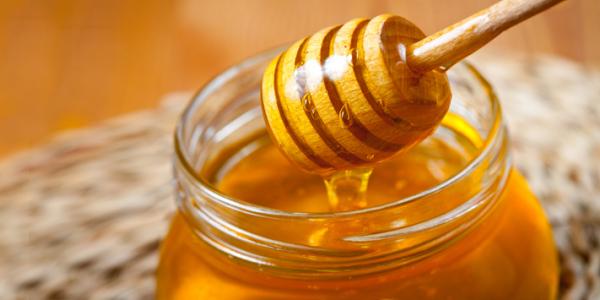
Bee pollen and honey have been used medicinally for hundreds of years, but what are their proven health benefits?
What is honey and how is it used?
Bee pollen is a mixture of saliva and nectar (or honey) made when young bees land on a flower. The pollen is carried back to the hive, where it is then stored in the hive’s honeycomb to ferment food for the bee colony. In its rawest form, honey is composed of bee pollen, bee propolis — a compound that comes from tree sap — and loads of antioxidants.
Dating back hundreds of years, ancient Egyptians offered honey to their gods. Similarly, Greek, Roman and Chinese cultures used it medicinally to treat wounds, fevers and stomach ailments. Today, honey is used medicinally and as a food additive or nutritional supplement.
What about processed honey?
Honey manufacturers typically pasteurize raw honey before selling it, meaning they heat the honey at high temperatures to kill off yeast cells and increase the honey’s shelf life. Consequently, a lot of store-bought honey has less nutritional value because of this process.
Regardless of how it is processed, honey still contains healthful compounds like antioxidants, amino acids and vitamins. And even though raw honey contains 16g of sugar per tablespoon, research shows that it is still a healthier alternative to table sugar.
What are the health benefits?
Studies suggest that there are overlapping health benefits for both bee pollen and honey. This is no surprise, since bee pollen makes up a good amount of honey as a whole. Here are a few of the major benefits supported by both ancient philosophies and modern science:
- Good source of antioxidants: Researchers have found that eating foods with antioxidant-rich content can reduce the risk of chronic illnesses such as heart disease and diabetes. This includes the plant chemicals found in bee pollen and raw honey, which can include as many antioxidants as fruits and vegetables.
- Natural antibacterial and antifungal: Honey naturally contains the antiseptic hydrogen peroxide, which means it can kill harmful bacteria and fungi. This means that honey can actually be used as an antibacterial and antifungal, depending on the individual product's properties.
- Wound healing agent: Honey is acidic, which means it can release oxygen from a wound and promote healing. Depending on the specific honey’s properties, it can even boost healing time and reduce infection. Manuka honey, native to New Zealand, is often applied directly to minor cuts or burns to help kill germs and regenerate tissue. It is not advised to treat cuts with everyday, store-bought honey. Instead, look for a “raw” honey alternative in the health foods section of your grocery store.
Keep in mind that using bee pollen and honey is not recommended if you have any form of bee allergy. You should also be wary of products labeled as “pure honey” or claiming to be sourced locally — unless the label reads “raw honey,” the product has most likely been pasteurized.
Whether you buy raw or store-bought honey, keep in mind that the taste and shelf life varies across each brand and product. If you’re thinking about incorporating honey or bee pollen into your routine, remember to talk to your provider before making any changes to your diet.
This article first appeared in the April 2020 edition of the HealthPerks newsletter.

